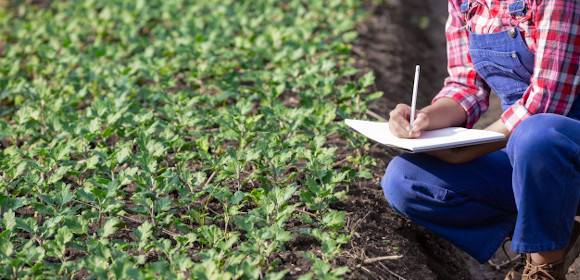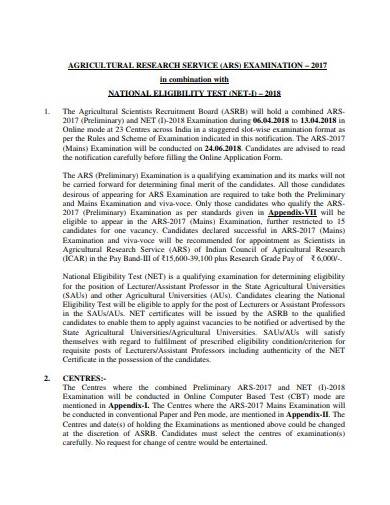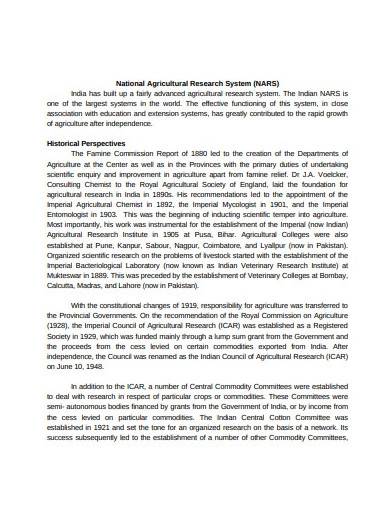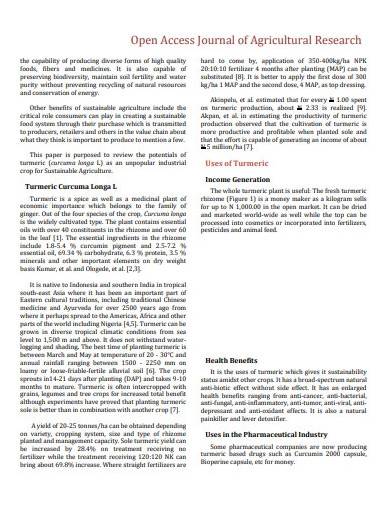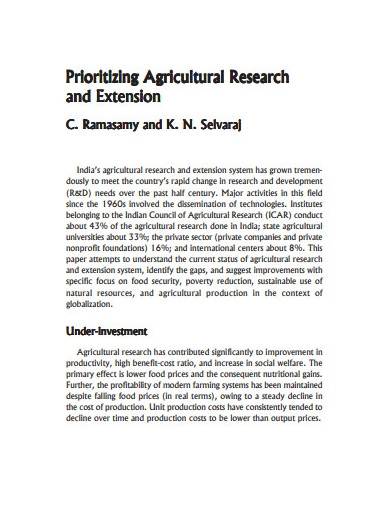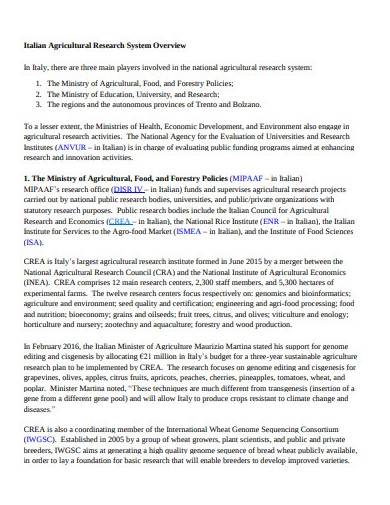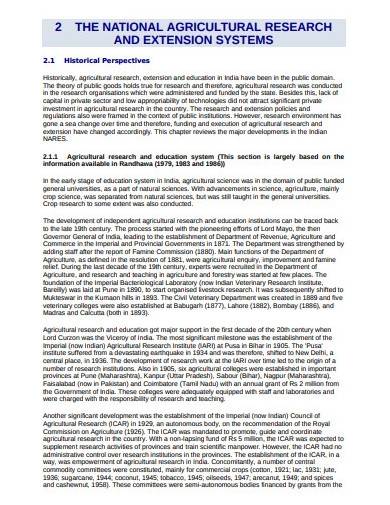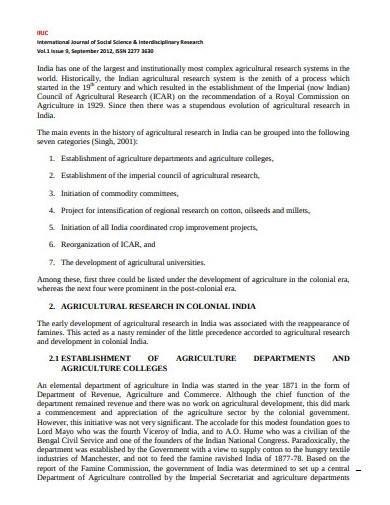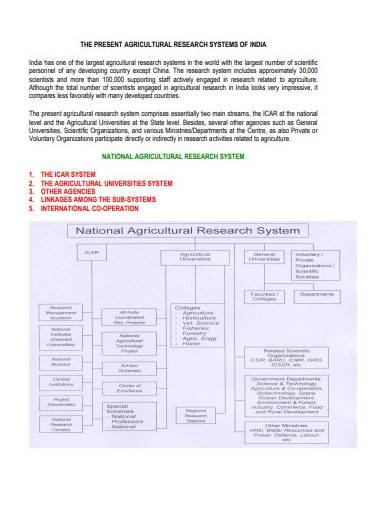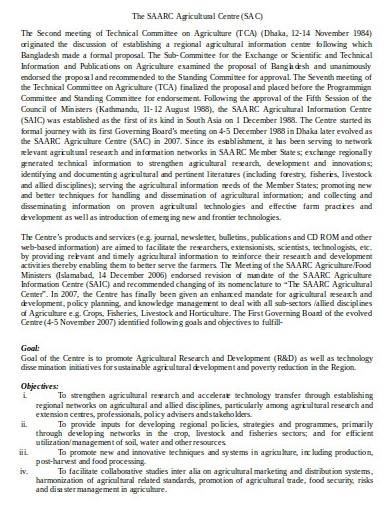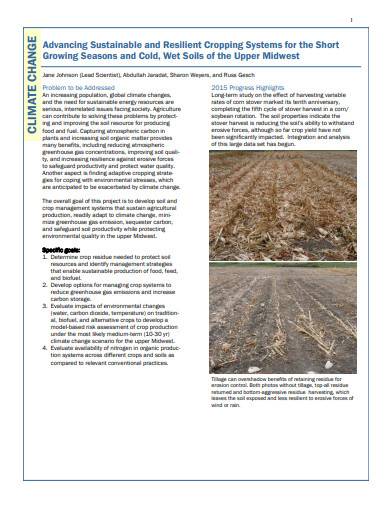It is a typical Sunday for some people to drive off to their favorite restaurant and eat lunch with family and friends. With the comforting food on the table, there is nothing better than spending the day with your loved ones. According to Acpeds.org, eating with people close to you improves communication: listening to each other, sharing ideas, and solving problems. Food brings people together, and it gets better if shared. But have you ever stopped to think about your favorite meal and its origin? A report posted by Forbes said that the percentage of Americans who have less knowledge about food and agriculture is alarmingly high. It even further revealed that Americans are agriculturally illiterate. For the record, 40% of 4th, 5th, and 6th graders from California did not know that the patty in a hamburger comes from cows. With all that said, researching about agriculture and educating people about the products they consume is merely a simple act. Learn more about agriculture research by reading more from this article below.
What Is Agriculture Research?
Developing methods to improve the productivity of agriculture has been an endeavor for several organizations over the years. The reason is to address several issues in line with food consumption, such as hunger, malnutrition, food scarcity, and more. However, it can be said that these undertakings have not entirely put these issues to a halt because it still exists in the present.
What is agriculture research report truly about? Before the world ran out of food, many institutions have come together with the goals of researching, developing, and outreaching innovations and technologies to eliminate the problems faced by the agriculture industry, such as animal and plant disease and low agricultural productivity. It is important to remember that cultivation research is not just about bringing food on the table or shopping for the ingredients for your favorite dinner. The result of this research does not only fill the stomach of many people, but it reaches a broader field—enriched agriculture can affect economic growth, climate change, and food security.
Sustainable Agriculture
Another issue that could possibly affect the future of society’s agriculture industry is meeting the needs of the people without weighing on the next generation’s ability to produce their future needs. That said, farmers and manufacturers have to practice sustainable agriculture to maintain the balance of food consumption and the resources from the environment. DoSomething.org defined sustainable agriculture as the rejection of the approach in industrial production, or factory farming. It aims to sustain environmental health, economic profitability, and social and economic equity. The risk of factory farming, such as erosion, deforestation, depleted and contaminated soil and water resources, the loss of biodiversity, labor abuses, and the decline of family farms, can be addressed with several concepts of sustainable agriculture. Today, these techniques are slowly improving the condition of the agriculture industry. Cultivating plants and animals with sustainable agriculture means not using chemicals and fertilizers to increase productivity. Encouraging crop diversity and precipitation as natural irrigation is what sustainable agriculture aims for.
FREE 10+ Agricultural Research Samples & Templates in PDF | MS Word
1. Agricultural Research Service Template
2. National Agricultural Research Template
3. Journal Agricultural Research Template
4. Agricultural Research Overview Template
5. Sample Agricultural Research Template
6. Basic Agricultural Research Template
7. Agricultural Research System Template
8. International Agricultural Research Template
9. Format of Agricultural Research Template
10. Agricultural Research Template
11. Agricultural Research Report Template
How to Make Agricultural Research
There are many types of research relating to agriculture that has been published by institutions, organizations, and even students. Some of the industry’s struggles might have been addressed from the past years; however, some offshoots remained unsolved. Doing research means acknowledging a problem. With that problem, a researcher has to come up with a process in finding a solution to the problem. As far as it goes, finishing research does not mean it should stop there. There is always room for development if people do not limit their curiosity. We made a list of tips to guide you in doing agricultural research. Continue reading below.
1. Develop a Topic
The hardest part of a research process could be developing a topic. If you are having a hard time with this, reading textbooks, periodicals, sample reports, or old research papers is the way around it. Once you have an idea, make sure that you understand, and you are interested in it. If not, resort to changing the topic before even starting the research. An uninteresting topic will bore the researcher. And that is the last thing that you would want. So, take the time to choose what you want to talk about because it will be the core of your research. After that, take note of the things you already know about the main topic. In doing that, develop questions with “why?” and “what if?” With these questions, you can further elaborate on your research. Also, you might find interesting subjects in the questions you come up with.
2. Conduct Preliminary Research
Writing research gives the researcher the responsibility to base it on facts. Failing to do so will result in research that is unconvincing, weak, and unreliable. We could not stress it enough, but being truthful to facts is the best way to support the main topic. More so, taking notes of pieces of information that seem essential could be the focus of your paper. With that, you can start to develop a thesis statement or the main problem as the central argument. The tip in composing a strong thesis statement is to keep it concise, contentious, and coherent. One to two sentences is enough to structure your thesis statement. So, make sure it briefly summarizes your argument, makes a claim that needs research analysis, and makes coherent points that relate to every bit of the paper. Don’t worry if the main problem is not as strong as you want it to be because you can revise it as you go on with your research.
3. Evaluate and Analyze the Information
An article by Forbes said that there are 16 million Americans who think that chocolate milk comes from brown cows. If you are not one of these people, for sure you know that brown cows do not produce chocolate milk, because chocolate milk is a mixture of sweetened chocolate syrup and milk. If you think about it, even in the era of multimedia, when information is more accessible, there is still a chance to be misinformed. In that case, look for facts that are accurate and appropriate for your paper. Evaluating the information before using it in the research will make a big difference in your study.
4. Communicate with the Information
Well-phrased sentences and paragraphs make a research paper comprehensive. It is important to keep in mind that your paper is a communication tool, too. To communicate with your readers well, facts and information are not all there is. Convey the message of the agricultural research by turning the rough ideas into workable arguments. Additionally, to make the paper easy-to-read, organize, and arrange the paragraphs and sentences into a logical order. That way, you can clearly express your ideas.
FAQs
Why is agricultural research important?
Agricultural research is important because it seeks to increase livestock and crop yields, increase food security and quality, innovate more equipment, reduce food loss, and develop farmland.
What are some types of research being conducted in agriculture?
There are several areas of agricultural research, but the following are the focus of most studies: animal immunization, artificial insemination, biological control of pests, embryo transfer, genetic engineering, hydroponics, and tissue culture.
What is a SARE grant?
The Sustainable Agriculture Research and Education (SARE) is a program by the United States Department of Agriculture to grant outreach programs for farmers, ranchers, researchers, and educators who want to improve in farming profitability, protect water and land, and help communities.
The ingredients for your favorite fruit shake, steak, and pasta are grown from the soil. If agriculture did not cultivate these products, there would be no hearty meal that will comfort you from a tiring day, or fancy your cravings in the winter. Published agricultural research means that people are striving to improve the industry’s capacity to sustain the needs of the society. However, this is not a task for a number of people, but it is for all. As long as people continue to innovate methods, sustain agriculture, and educate people about ethical consumerism, then the world will not run out of food to eat.
Related Posts
FREE 10+ Concurrent Validity Samples & Templates in MS Word | PDF
FREE 10+ Resource Tracking Samples & Templates in MS Word | PDF
FREE 4+ Clinical Case Study Samples & Templates in PDF
FREE 10+ Content Validity Samples & Templates in PDF
FREE 10+ Construct Validity Samples & Templates in MS Word | PDF
FREE 10+ Code of Human Research Ethics Samples & Templates in MS Word | PDF
FREE 10+ Biography Research Report Samples and Templates in PDF
FREE 10+ System Documentation Samples & Templates in MS Word | PDF
FREE 10+ Process Document Samples & Templates in MS Word | PDF
FREE 10+ Action Research Samples & Templates in PDF
FREE 10+ Longitudinal Research Samples & Templates in PDF | MS Word
FREE 10+ Causal Research Samples & Templates in MS Word | PDF
FREE 10+ Client Discovery Samples & Templates in MS Word | PDF
FREE 10+ Null Hypothesis Samples & Templates in MS Word | PDF
FREE 9+ Product Knowledge Samples & Templates in PDF
